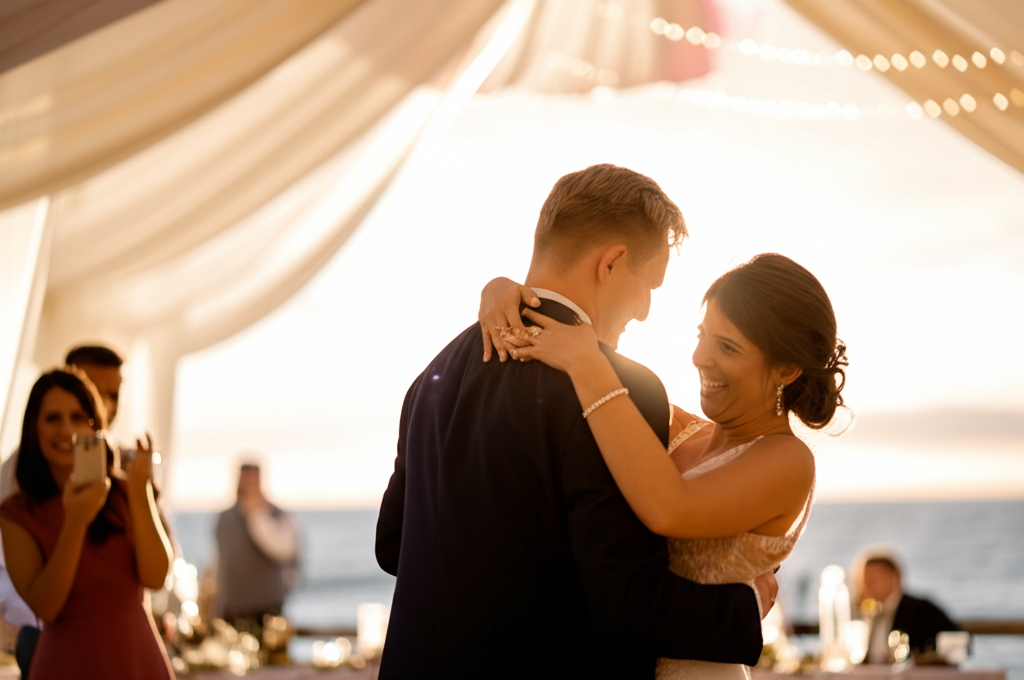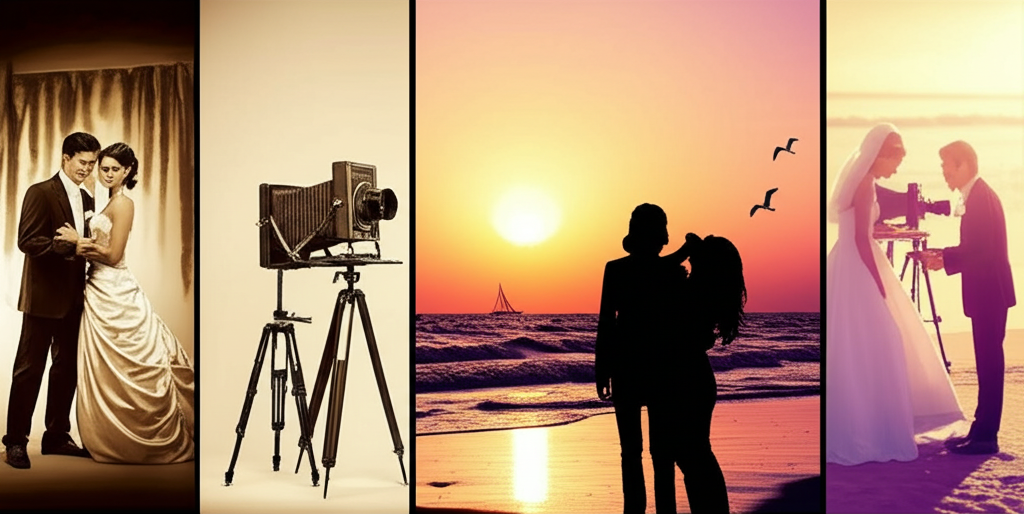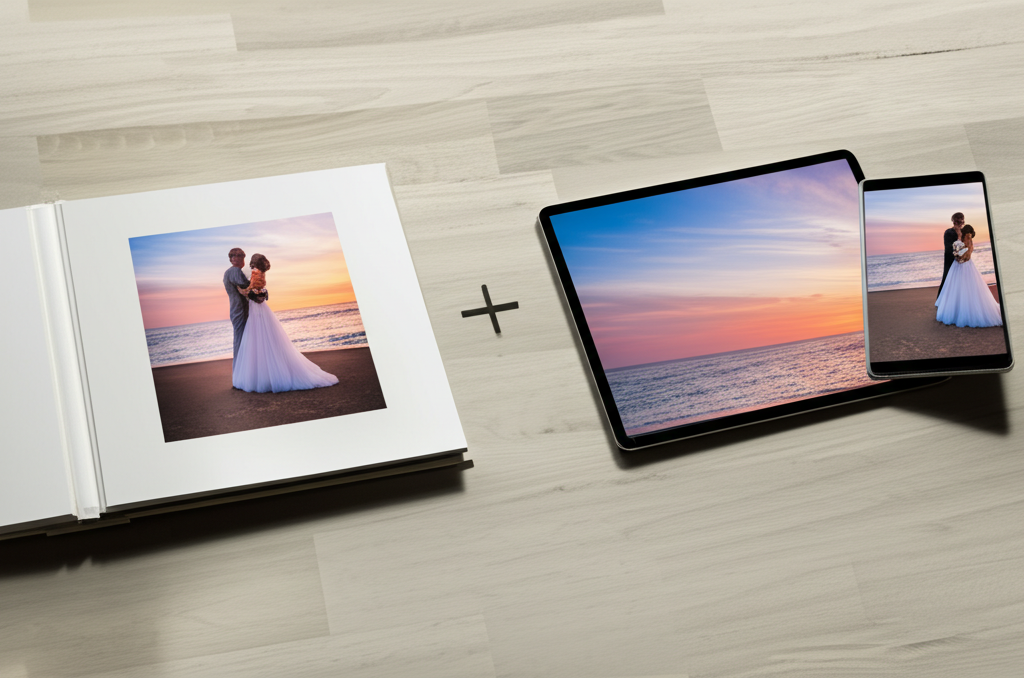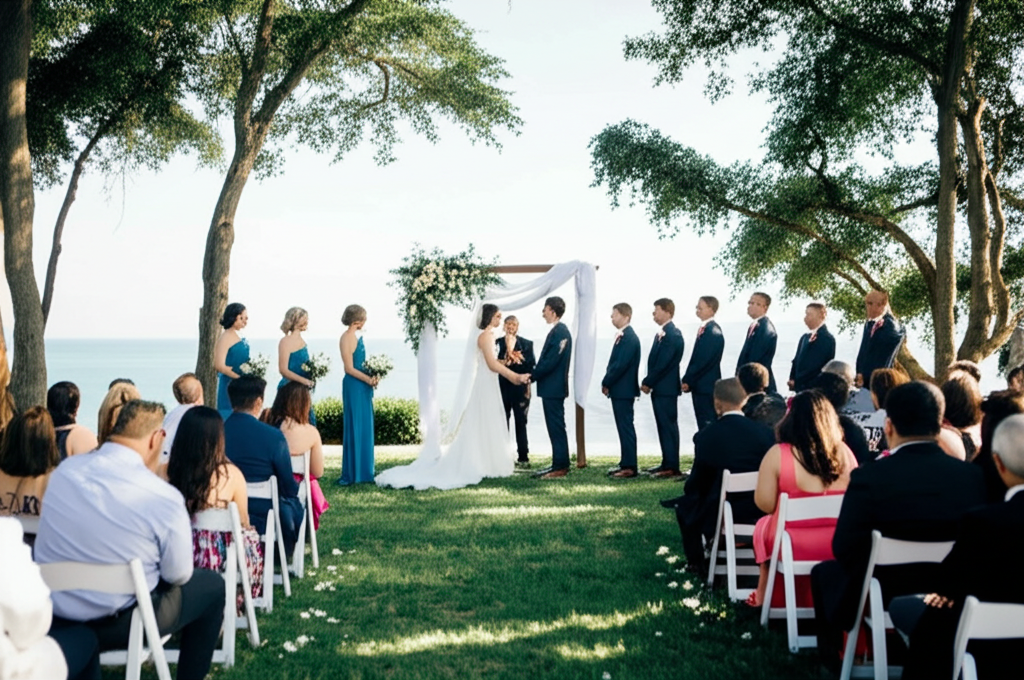Wedding photography has undergone a remarkable transformation over the decades, evolving from formal, limited collections of posed portraits to the dynamic, comprehensive visual storytelling we see today. Understanding this evolution helps us appreciate both how far we've come and the unique value of each approach.
The Film Era: Precious and Limited (1840s-1990s)
Wedding photography began shortly after photography itself was invented, but for most of its history, it was characterized by significant limitations:
- Expense: Film and processing costs meant photos were taken sparingly
- Technical barriers: Photography required specialized equipment and expertise
- Time constraints: Developing and printing was a lengthy process
- Limited perspectives: Typically only one photographer captured the day
These constraints led to a tradition of formal, posed photographs focusing primarily on ceremonial moments and family groupings. Candid shots were rare, and the resulting wedding albums, while treasured, captured only a narrow slice of the day's events.
The Digital Revolution: Abundance and Access (2000s-2010s)
The transition to digital photography revolutionized wedding memories in several key ways:
- Volume: Without film costs, photographers could take thousands of images
- Immediacy: Images could be viewed and shared shortly after being taken
- Democratization: As digital cameras became affordable and smartphones emerged, guests began contributing to the photographic record
- Stylistic evolution: Photojournalistic and candid approaches flourished alongside traditional posed photography
This era saw wedding photography transform from a documentation of ceremonial moments to a comprehensive visual narrative of the entire day. Yet it also introduced new challenges—particularly how to collect, organize, and share the explosion of images coming from multiple sources.
The Connected Experience: Seamless and Collective (2020s-Present)
Today, we've entered a new era of wedding photography characterized by connected technologies that solve the challenges of the digital revolution while preserving its benefits:
- NFC technology: Services like TagTheDay use simple tap-to-share functionality for effortless photo collection
- Cloud integration: Images automatically flow to secure online galleries
- AI assistance: Smart algorithms help sort, select, and even enhance images
- Hybrid approaches: Digital convenience combines with physical products for the best of both worlds
This connected approach transforms wedding photography from a product to an experience, involving the entire community in memory preservation while maintaining professional quality and curation.
The Value of Each Era
Each phase in the evolution of wedding photography offers distinct advantages:
- The film era provided timeless, carefully composed images with a distinct aesthetic quality
- The digital revolution captured comprehensive visual stories from multiple angles
- Today's connected experience combines quality, quantity, and community involvement
Many modern couples are finding ways to incorporate elements from each era—perhaps having a film photographer capture portrait sessions, digital professionals document the day comprehensively, and TagTheDay collect guest perspectives seamlessly.
Looking Forward
As we look to the future of wedding photography, we see technologies like augmented reality, virtual reality, and increasingly sophisticated AI entering the space. Yet the fundamental purpose remains unchanged: to preserve the emotions, connections, and moments of one of life's most significant celebrations.
The most successful approaches will continue to be those that balance innovation with the timeless goal of authentic memory preservation—capturing not just how the day looked, but how it felt to everyone present.
By understanding this evolution, couples can make informed choices about how to document their own weddings, appreciating both the heritage of wedding photography traditions and the exciting possibilities of emerging technologies.




